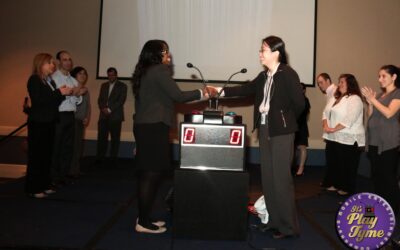Imagine a school where every student feels valued and inspired. A place where everyone is supported to reach their full potential. This is more than a dream; it’s essential for today’s schools. It helps create a place that supports learning, growth, and well-being for all.
Creating a positive school culture means having a shared sense of purpose and values. It’s about respect, working together, and being inclusive. By focusing on building strong relationships, celebrating diversity, and giving students and teachers a voice, schools can become places of support and growth.
This article will explore what makes a school culture positive and how to make it inclusive and empowering. By following these strategies, you can make your school a place where everyone feels valued and inspired.
Key Takeaways
- A positive school culture helps everyone learn, grow, and feel good.
- Important steps include building strong bonds, celebrating different backgrounds, and giving power to students and teachers.
- Being open and diverse is key to a positive school culture.
- Letting students help make decisions and giving teachers leadership roles helps create a supportive place.
- Using these methods can lead to better grades, emotional health, and a strong community feeling.
Book a Live Interactive Game Show!
Call us today. TV Style Game Shows for groups are our specialty. Let's Play!
Defining a Positive School Culture
A positive school culture is key to a great learning environment. It’s built on shared values, norms, and beliefs. These shape how students, teachers, and staff interact and behave.
Respect, collaboration, empathy, and a growth mindset are at the heart of a positive culture. When everyone in the school lives by these values, it makes everyone feel they belong. It also makes learning a team effort.
Clear expectations that match these values help build a culture of kindness and support. This makes the school a better place for everyone.
A school with a positive culture cares about every student’s well-being and success. It celebrates diversity and helps everyone use their strengths. This approach makes students feel important, supported, and ready to do their best.
“A positive school culture is not just about academic achievement; it’s about creating a community where every student feels safe, respected, and inspired to learn and grow.”
Creating a positive school culture takes effort from everyone: teachers, staff, students, and families. By sharing values and beliefs, schools become united and focused. This unity boosts student interest, effort, and success.
Building Strong Relationships
Building strong relationships in schools is key to a positive school culture. When everyone feels connected and supported, they do better in school. This means they do well in learning, making friends, and feeling good about themselves.
Fostering Teacher-Student Connections
Teachers and students need to connect to make school better. When teachers know their students well, they can help them in many ways. They can understand what each student needs and how they learn best.
To make these connections strong, schools can:
- Have one-on-one talks between teachers and students
- Regular check-ins to talk about school and how students are doing
- Let teachers share their lives and interests with students
- Create a caring classroom where everyone talks openly
Encouraging Peer-to-Peer Support
Students also need to support each other to feel part of the school family. Feeling close to classmates makes students more engaged and happy in school.
Schools can help by:
- Doing group activities that teach teamwork and talking skills
- Starting mentor programs where older students help younger ones
- Teaching social skills like empathy and solving problems together
- Offering clubs and activities that students like
“The relationships we have with students are the foundation of everything we do as educators. When we take the time to build strong, positive connections with our students, we create a learning environment that is built on trust, respect, and a shared commitment to success.”
By focusing on relationships, schools can make a place where students do well in school, feel good, and feel like they belong.
Promoting Inclusivity and Celebrating Diversity
Creating a welcoming school environment is key to a positive culture. Schools should value and celebrate the diverse backgrounds and experiences of everyone. This makes everyone feel like they belong and are respected.
Embracing Cultural Differences
Schools need to understand and appreciate the cultural differences in their community. They can do this by training staff on cultural competency, adding diverse perspectives to the curriculum, and letting students share their traditions. This way, all students feel seen, heard, and valued.
Creating an Inclusive Curriculum
An inclusive curriculum reflects the diverse voices and experiences of students. Teachers should choose materials that show a wide range of perspectives and cultures. This helps students understand and appreciate their school’s diversity.
Here are some ways to make a curriculum more inclusive:
- Select texts and resources from diverse authors and experiences
- Add lessons on social justice, equity, and inclusion
- Let students share their stories and views
- Give students chances to talk and work together across cultures
Organizing Diversity Events and Celebrations
Diversity events and celebrations are great for showing off a school’s cultural richness. They can be multicultural fairs, heritage months, or groups based on identity. These events show a school’s dedication to inclusivity and diversity.
Here are some ideas for these events:
- Have a multicultural fair with food, music, art, and traditions from different cultures
- Have heritage months to honor the contributions of various cultural groups
- Create groups for students with similar experiences and backgrounds
- Invite guest speakers from diverse backgrounds to share their stories
By valuing cultural differences, making the curriculum inclusive, and having diversity events, schools can build a positive culture. This culture celebrates and honors everyone’s unique identities and experiences.
Got Games? – Press Play! #boostmorale #teambuilding #schoolculture
![]()
Book a live game show experience today!
Contact us for further details.
For Immediate assistance by text – 917-670-4689
No deposit required. 5 Star Google Reviews.
We plan and facilitate all activities.
Engaging Students in Decision-Making
Letting students have a say in their education is key to a positive school culture. By involving them in decisions, you make them feel more responsible and proud of their school. When students know their opinions matter, they care more about their education and want to help make the school better.
Student councils or advisory boards are great ways to get students involved. These groups let students talk about what matters to them, suggest solutions, and work with leaders to make changes. Students learn important skills like communication and teamwork while understanding the school’s challenges and opportunities.
Surveys and focus groups are also good ways to hear from students. They help you know what students like and need in school, from classes to clubs and rules. This feedback helps make decisions that meet the students’ needs and values their opinions.
“When students are given a voice in shaping their learning environment, they become more engaged, motivated, and committed to their education.”
Participatory action research projects are another way to engage students. In these, students work with teachers and leaders to tackle issues in their school. They learn to think critically, analyze data, and come up with solutions. This approach helps students feel they can make a difference and take responsibility for their school.
Engaging students in decisions is about building a school culture that values their opinions and contributions. By offering many ways for students to share their thoughts and work together, you create a sense of belonging and empowerment. This approach helps your school succeed.
Book a Live Interactive Game Show!
Call us today. TV Style Game Shows for groups are our specialty. Let's Play!
Empowering Teachers as Leaders
In a positive school culture, teachers are more than just instructors. They are leaders who shape the learning environment and help students succeed. By giving teachers leadership roles, schools create a sense of ownership and teamwork. This leads to better student results.
Providing Professional Development Opportunities
Empowering teachers means offering them chances to grow professionally. These chances should help teachers learn new skills and keep up with the latest in their fields. There are many ways to do this, such as:
- Workshops, team building events and seminars
- Conferences and conventions
- Online courses and webinars
- Mentoring and coaching programs
By investing in teachers, schools show they believe in their potential as leaders.
Encouraging Teacher Collaboration
Encouraging teachers to work together is another way to empower them. When teachers collaborate, they share knowledge and learn from each other. This creates a strong sense of purpose and responsibility for student learning. Schools can support this by:
- Creating professional learning communities (PLCs) for teachers to meet and share best practices.
- Using team teaching, where teachers work together in the classroom.
- Supporting peer mentoring, where experienced teachers help new ones.
Collaboration helps teachers use their skills together, leading to better teaching and student results.
By empowering teachers as leaders and offering them chances to grow and work together, schools build a positive culture. This culture values everyone’s skills and contributions. It leads to happier teachers, more teachers staying, and better student results.
Promoting a Positive School Culture through Strong Leadership
Strong leadership is key to a positive school culture. Leaders set the tone for everyone in the school. They inspire students, staff, and families to work together towards a common goal.
By showing a clear vision and positive behaviors, leaders create a culture of excellence. This positivity touches every part of school life.
Developing a Clear Vision and Mission
Effective leaders create a clear vision and mission. These outline the school’s values, goals, and what’s expected. This vision guides the school community, giving direction and purpose.
By sharing this vision with passion, leaders inspire others to share these values. Together, they work towards their goals.
A vision and mission statement should live and breathe the school’s commitment to excellence. Leaders make sure every decision and program matches this vision. This makes the learning environment cohesive and purposeful.
Modeling Positive Behaviors and Attitudes
Leaders shape their school’s culture with their actions and attitudes. By showing respect, empathy, and a strong work ethic, they inspire others. This sets a positive example.
When leaders truly care about students’ success and well-being, it makes a big impact. It shows that the school values everyone.
Good leaders also value open communication and transparency. They listen to students, staff, and families, making sure everyone’s heard. This builds trust and a sense of shared success.
Prioritizing Open Communication
Open communication is key to a positive school culture. It makes sure students, teachers, and administrators can share their thoughts and feelings. This builds trust and helps everyone work together better.
Establishing Regular Feedback Channels
Schools need regular feedback channels for open communication. This lets everyone share their thoughts and ideas. Here are some ways to get feedback from students, staff, and families:
- Conducting surveys to check satisfaction and find areas to improve
- Organizing focus groups to talk about specific topics deeply
- Holding town hall meetings to share news, answer questions, and get feedback
These feedback channels show that everyone’s opinions matter. They make sure everyone’s voice is heard.
Encouraging Transparency and Honesty
Being open and honest is vital for trust and accountability in schools. Leaders should share important information and talk openly about challenges and successes.
Transparency is not about sharing everything, but about sharing the right things at the right time with the right people.
By promoting honesty and openness, schools create a safe space for everyone. This leads to a more positive and supportive school culture.

employee-engagement-game-show-idea
Ways to Involve the Community
Promoting a positive school culture goes beyond the classroom. It reaches out to the community. By working with local groups and getting parents and families involved, schools build a network that helps students learn and feel good.
Partnering with Local Organizations
Working with community partners gives students new skills and meaningful projects. Here are ways to make these partnerships:
- Reach out to local businesses, nonprofits, and groups to see if you can work together
- Start mentoring programs that link students with professionals
- Plan community service projects for students to help others and make a difference
Working with local groups shows schools care about the community. It also gives students real-world experiences that help their school learning.
Engaging Parents and Families
Getting parents and families involved is key to a positive school culture. When they feel welcome, they support their kids’ education more. Here are ways to get them involved:
- Keep in touch with regular newsletters, emails, or meetings
- Give parents chances to volunteer with their skills
- Have family events like open houses, cultural festivals, or workshops
When schools focus on involving parents and families, they build a strong community. This leads to a culture of teamwork and support.
By working with the community and engaging parents and families, schools gain a lot. They get resources and expertise that make learning better for everyone.
Integrating Social-Emotional Learning
In today’s schools, it’s more than just about grades. Adding social-emotional learning (SEL) to the mix is key for students’ growth. SEL helps students learn important life skills for happiness and success.
SEL teaches five key skills: self-awareness, self-management, social awareness, relationship skills, and responsible decision-making. These skills help students handle their feelings, set goals, understand others, make good friends, and make choices.
Adding SEL to everyday school life makes it a better place for learning. Teachers can do this by:
- Starting discussions and activities that teach empathy and how to solve problems
- Showing and teaching positive ways to handle feelings and social actions
- Offering chances for students to work together, lead, and solve problems
- Helping students think about their goals and how to grow stronger
By adding SEL to the school day, teachers equip students with the skills to overcome obstacles, make strong friends, and do well in school and life. Feeling supported and connected emotionally makes students more likely to learn, take chances, and help out at school.
SEL is not just one program or way of teaching. It’s about using strategies in classrooms, schools, homes, and communities to help students get the skills and mindset they need.
Putting effort into social-emotional learning means we’re investing in our students’ future. By focusing on SEL and valuing the whole child, schools can help students become aware, strong, and caring. This prepares them for the challenges of today and tomorrow.

nj-school-assembly
Recognizing and Celebrating Achievements
Creating a positive school culture means celebrating the wins of students, staff, and the whole school. By praising individual and team efforts, schools build a sense of pride and motivation. This makes the learning environment supportive and engaging.
Acknowledging Individual and Group Successes
Schools can set up regular programs to spotlight students and staff achievements. These programs might include:
- Student of the month awards
- Academic achievement certificates
- Teacher appreciation events
- Extracurricular excellence awards
By publicly sharing the wins of people and teams, schools show they value hard work and diverse skills. This boosts the morale of everyone in the community.
Creating Traditions and Rituals
Starting school traditions and rituals strengthens community and identity. These events bring students and staff together to celebrate their wins. They also highlight the school’s core values. Some examples are:
- School-wide assemblies
- Spirit weeks
- Annual events, such as homecoming or field day
- Graduation ceremonies
Traditions and rituals make everyone feel they belong and are part of something bigger. They help build a positive school culture that honors everyone’s achievements.
Conclusion
Promoting a positive school culture is crucial for schools that want to help all students feel welcome and supported. By using the strategies talked about here, schools can make a place where students do well and feel good. This starts with strong bonds between teachers and students, and also with students helping each other out.
Accepting everyone and making the curriculum welcoming makes students feel they belong. Letting students have a say in decisions and training teachers to lead helps too. A strong leader with a clear vision and positive example sets the school’s tone.
Good communication, getting the community involved, and teaching social skills are also key. Celebrating what students and groups achieve boosts a culture of high standards and fairness. In the end, a positive school culture honors everyone’s strengths and works together for the success of all students.
FAQ – Positive School Culture
How can schools foster strong teacher-student connections?
Schools can build strong teacher-student bonds by promoting open talks and one-on-one time. They should also make the classroom a caring place. This approach boosts student interest, effort, and grades.
What are some ways to celebrate diversity in schools?
Schools can honor diversity by adding diverse views to the curriculum and training staff on cultural understanding. They can host events and let students share their backgrounds. This fosters empathy and respect in the school community.
Why is it important to engage students in decision-making?
Letting students have a say shows they matter and makes learning more focused on them. It can be through student councils, surveys, or projects. These activities improve leadership, thinking, and student involvement in their education.
How can schools empower teachers as leaders?
Schools empower teachers by offering ongoing training and leadership roles. Encouraging teamwork and mentoring helps teachers share knowledge and aim together.
What role does strong leadership play in promoting a positive school culture?
Strong leaders set a positive tone and guide the school. They share a clear vision, communicate well, and lead by example. This includes showing respect, empathy, and a drive for excellence.
How can schools prioritize open communication?
Schools can focus on open talks by using surveys, focus groups, and meetings. Being open and honest about data and issues builds trust and accountability.
Why is community involvement important for promoting a positive school culture?
Community ties strengthen the school’s connection to the wider world. They offer more resources and support for students. Working with local groups provides learning chances, mentoring, and community service. Parent involvement also builds a supportive community for students.
What is the significance of integrating social-emotional learning (SEL) in schools?
Adding SEL to schools supports students fully. It teaches skills like self-awareness and decision-making. This makes learning more supportive and welcoming for everyone.









